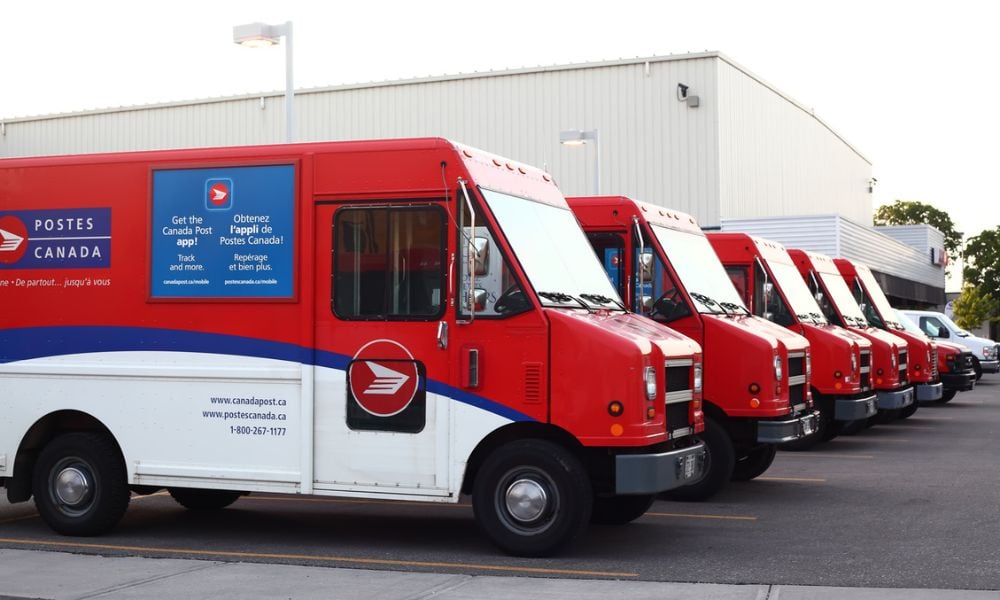If your efforts to create a more inclusive workplace have fallen flat, here’s what to do
.jpg)
More than ever, successful businesses are taking strides to foster diverse and inclusive work environments – but some organizations are finding their programs either fail to stick or run out of steam.
It’s often because of a simple design flaw: if the plan is dreamt up without input from a diverse range of staff, it’s likely to miss the point.
“If you do this in a silo, it’s gonna go wrong,” warns Michael Bach, founder and chief executive of the Canadian Centre for Diversity and Inclusion.
“It’s important to make sure you’ve got difference at the table. That difference is sometimes visible – skin colour, gender – but it’s also sometimes invisible, and that might be an invisible disability or it might just be a difference of perspective.”
The biggest concern he’s currently hearing from employers is about the longevity of diversity programs, and getting their efforts to stick – as well as how to measure the change.
“Some are really focused on the measurement piece right now – ‘how do I measure the return on investment? We’re putting all this money in, how do we know that we’re getting our money back?’,” he says.
Other employers, especially those with high turnover, are struggling to cement a diversity and inclusion strategy.
“For every new body in the door, you have to repeat your diversity training … That’s not necessarily financially feasible, to continue to repeat things.”
A successful and lasting culture shift needs to be “fully integrated”, says Bach, an internationally recognized expert and thought leader on diversity, inclusion and employment equity.
“Diversity and inclusive should layer over everything in the organization – everything from talent attraction, your recruiting processes, your development processes, your promotions, you should be monitoring diversity as it relates to voluntary and involuntary turnover. And that’s just in the HR function.
“There’s every function – communications and marketing, even facilities management, should have a layer of diversity over it – to ensure you’re considering all of the options, because we get in our little world and we don’t necessarily bring all of those perspectives to the table.
“Thinking about diversity councils or employer resource groups, those are very effective things when they’re done right. If they’re not working, they’re probably not being done right.”
While HR may lead the early stages of the strategy, those professionals should be looking to bring other perspectives on board to define, communicate and test the culture.
“Put out a call for volunteers – what you may find is lots of people stick up their hand,” Bach says.
“There are lots of people who are from the varying different groups that are out there that are more than happy to spend some time to help change their organization to be more inclusive of their group.”
Bach adds that the process should never be rushed or forced.
“Don’t boil the ocean,” he says.
“I describe this as the incremental revolution and it is all about baby steps, and having a concrete plan, but then moving that plan forward slowly and methodically so the change takes hold, and you are seeing the culture change, so that the organization is becoming more inclusive.”
Related stories:
Will religious training be the next L&D trend?
Is ‘blind recruitment’ the key to workforce diversity?
Want the latest HR news direct to your inbox? Sign up for HRD Canada's daily newsletter.
It’s often because of a simple design flaw: if the plan is dreamt up without input from a diverse range of staff, it’s likely to miss the point.
“If you do this in a silo, it’s gonna go wrong,” warns Michael Bach, founder and chief executive of the Canadian Centre for Diversity and Inclusion.
“It’s important to make sure you’ve got difference at the table. That difference is sometimes visible – skin colour, gender – but it’s also sometimes invisible, and that might be an invisible disability or it might just be a difference of perspective.”
The biggest concern he’s currently hearing from employers is about the longevity of diversity programs, and getting their efforts to stick – as well as how to measure the change.
“Some are really focused on the measurement piece right now – ‘how do I measure the return on investment? We’re putting all this money in, how do we know that we’re getting our money back?’,” he says.
Other employers, especially those with high turnover, are struggling to cement a diversity and inclusion strategy.
“For every new body in the door, you have to repeat your diversity training … That’s not necessarily financially feasible, to continue to repeat things.”
A successful and lasting culture shift needs to be “fully integrated”, says Bach, an internationally recognized expert and thought leader on diversity, inclusion and employment equity.
“Diversity and inclusive should layer over everything in the organization – everything from talent attraction, your recruiting processes, your development processes, your promotions, you should be monitoring diversity as it relates to voluntary and involuntary turnover. And that’s just in the HR function.
“There’s every function – communications and marketing, even facilities management, should have a layer of diversity over it – to ensure you’re considering all of the options, because we get in our little world and we don’t necessarily bring all of those perspectives to the table.
“Thinking about diversity councils or employer resource groups, those are very effective things when they’re done right. If they’re not working, they’re probably not being done right.”
While HR may lead the early stages of the strategy, those professionals should be looking to bring other perspectives on board to define, communicate and test the culture.
“Put out a call for volunteers – what you may find is lots of people stick up their hand,” Bach says.
“There are lots of people who are from the varying different groups that are out there that are more than happy to spend some time to help change their organization to be more inclusive of their group.”
Bach adds that the process should never be rushed or forced.
“Don’t boil the ocean,” he says.
“I describe this as the incremental revolution and it is all about baby steps, and having a concrete plan, but then moving that plan forward slowly and methodically so the change takes hold, and you are seeing the culture change, so that the organization is becoming more inclusive.”
Related stories:
Will religious training be the next L&D trend?
Is ‘blind recruitment’ the key to workforce diversity?
Want the latest HR news direct to your inbox? Sign up for HRD Canada's daily newsletter.





